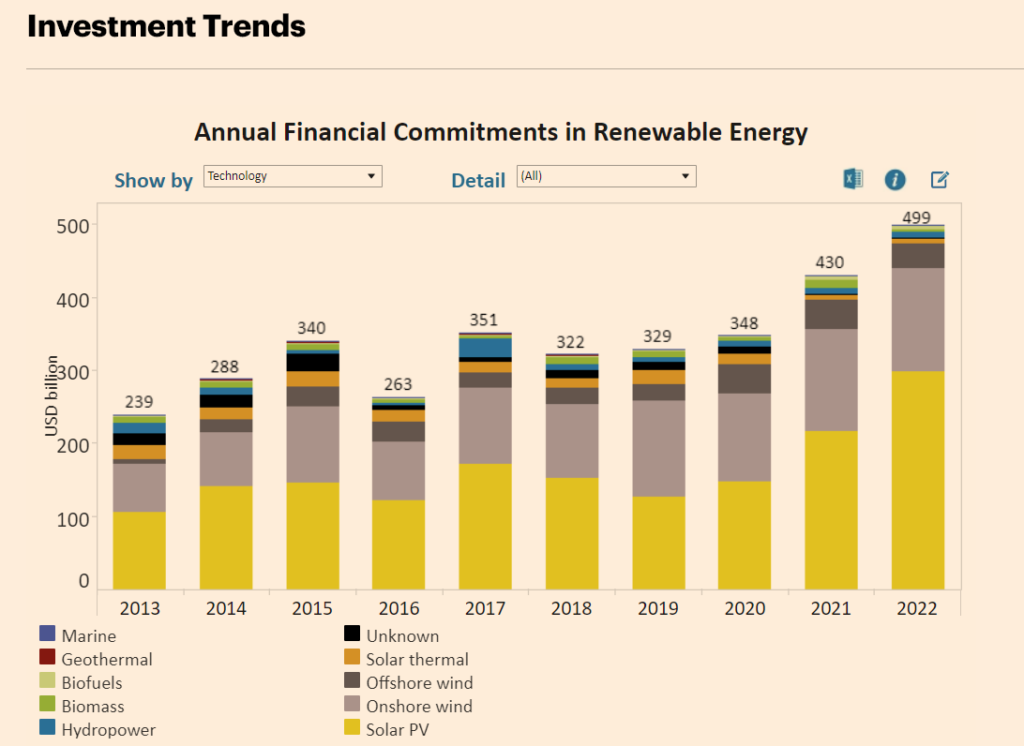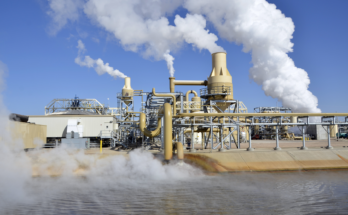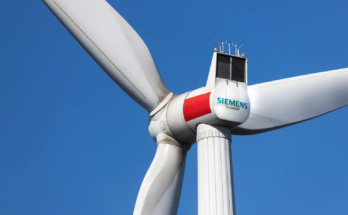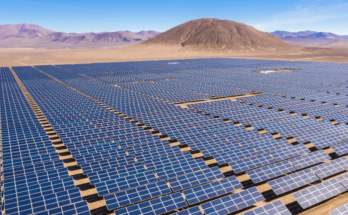
In the quest for sustainable energy sources, wind energy has emerged as a prominent player. This article delves into the fascinating world of rise of wind power. Exploring wind energy, this article delves into wind power source, how the kinetic energy of air in motion is transformed into electricity. It discusses the remarkable growth of wind power over the last two decades, the differences between onshore and offshore wind energy, technological advancements, and the historical evolution of wind turbines.
Introduction
Wind’s utilization in electricity generation involves the intricate conversion of air’s kinetic energy in motion into electrical power. Within modern wind turbines, the wind sets the rotor blades in motion, thereby transmuting kinetic energy into rotational vigor. This rotational vigor traverses a shaft towards the generator, ultimately begetting electrical energy.
The Rise of Wind Power

The ascent of wind power since the turn of the millennium has been underpinned by diligent research and development, favorable policies, and the diminishing of associated costs. The global cumulative wind power capacity, encompassing both onshore and offshore installations, has surged exponentially by a factor of 98 over the past two decades. This meteoric ascent is exemplified by the progression from a meager 7.5 gigawatts in 1997 to a formidable 733 gigawatts in 2018, as documented by IRENA’s dataset. The onshore wind capacity, in particular, has burgeoned from 178 gigawatts in 2010 to a staggering 699 gigawatts by 2020, while offshore wind has made even more significant strides, albeit from a lower starting point, escalating from 3.1 gigawatts in 2010 to 34.4 gigawatts in 2020. This trajectory of wind power generation has soared by a factor of 5.2 between 2009 and 2019, culminating in an impressive 1412 terawatt-hours of electricity produced.
Onshore vs. Offshore Wind Power Rise
The prospects for both onshore and offshore wind energy are still fraught with untapped potential on a global scale. With technological advancements and scale augmentation, costs have precipitously descended, and capacity factors have soared. In the decade spanning from 2010 to 2020, the worldwide weighted-average levelized cost of electricity (LCOE) for onshore wind energy plummeted by a substantial 56%, plummeting from USD 0.089 per kilowatt-hour to USD 0.039 per kilowatt-hour. In parallel, the LCOE for newly commissioned offshore wind projects experienced a nearly 50% reduction.
Technological Advancements Through The Rise of Wind Power
The capacity of wind turbines has exhibited continuous growth. In 1985, typical turbines boasted a rated capacity of a mere 0.05 megawatts and a rotor diameter of 15 meters. Present-day wind energy initiatives now feature onshore turbines with capacities in the range of 3-4 megawatts and offshore installations in the 8-12 megawatt bracket.
Maximizing Wind Power Extraction
The quantum of wind power extractable hinges upon the dimensions of the turbine and the length of its blades. The power output correlates with the rotor’s proportions and varies cubically with the wind speed. Theoretically, a doubling of wind speed augments wind power potential by a factor of eight.
Historical Evolution of Wind Turbines
The genesis of wind turbines dates back over a century. Following the advent of the electric generator in the 1830s, engineers commenced endeavors to harness wind energy for electricity generation. Although wind power experiments were conducted in the United Kingdom and the United States in 1887 and 1888, the birth of modern wind power is credited to Denmark, where horizontal-axis wind turbines materialized in 1891 and a colossal 22.8-meter wind turbine commenced operations in 1897. The contemporary wind power sector began to flourish in the 1980s.
Wind Energy Statistics

In consonance with IRENA’s most recent data, wind-generated electricity constituted 6% of the total electricity generated from renewable sources in 2016. While many regions across the globe boast robust wind speeds, the most propitious locations for harnessing wind power are occasionally situated in remote, less accessible areas. Offshore wind energy, in particular, harbors a wealth of untapped potential.
Conclusion
The utilization of wind energy for electricity generation has seen remarkable growth and technological advancements. As we tap into the vast potential of both onshore and offshore wind power, we move closer to a more sustainable and eco-friendly future.
FAQs
How do wind turbines generate electricity
Wind turbines generate electricity through a process that involves the conversion of wind energy into electrical power. Here’s a simplified explanation of how it works:
The wind sets the rotor blades of a wind turbine in motion.
The rotational energy produced by the moving blades is transferred to a shaft connected to a generator.
As the shaft turns, it drives the generator, which produces electricity.
What is the current global capacity of onshore wind power?
As of my last knowledge update in September 2021, the global capacity of onshore wind power had reached approximately 699 gigawatts by the year 2020. However, it’s important to note that these figures may have changed since then due to ongoing developments in the wind energy industry. You may want to check the latest data from reliable sources for the most up-to-date information.
Are offshore wind projects more expensive than onshore ones?
Historically, offshore wind projects have been more expensive to develop and maintain compared to onshore wind projects. This is because offshore projects involve additional costs associated with building foundations, transporting equipment to offshore locations, and the harsh marine environment. However, advancements in technology and increased scale have led to significant cost reductions in offshore wind, making it more competitive. The specific cost comparison between onshore and offshore projects can vary depending on factors such as location and project size.
How has the cost of wind energy decreased over the years?
The cost of wind energy has decreased significantly over the years, primarily due to technological advancements, increased scale, and improved efficiency. As of my last update, between 2010 and 2020, the worldwide weighted-average levelized cost of electricity (LCOE) for onshore wind energy had decreased by about 56%, from USD 0.089 per kilowatt-hour to USD 0.039 per kilowatt-hour. These reductions are largely attributed to innovations in turbine design, more efficient manufacturing processes, and streamlined installation and maintenance procedures.
What are the environmental benefits of wind energy?
Wind energy offers several environmental benefits, including:
- Reduced Greenhouse Gas Emissions: Wind power produces electricity without emitting greenhouse gases, making it a clean and sustainable energy source. This helps mitigate climate change.
- Air Quality Improvement: Wind energy reduces air pollution and smog, improving local air quality and public health.
- Conservation of Resources: Wind power reduces the demand for fossil fuels, helping conserve finite resources like coal, oil, and natural gas.
- Wildlife Preservation: Modern wind turbine designs include measures to protect birds and bats, and proper siting can minimize impacts on wildlife.
- Reduced Water Usage: Wind energy requires far less water for cooling than traditional power generation methods, reducing strain on water resources.
- Sustainable Energy Supply: Wind is a renewable energy source, ensuring a long-term and sustainable energy supply.


